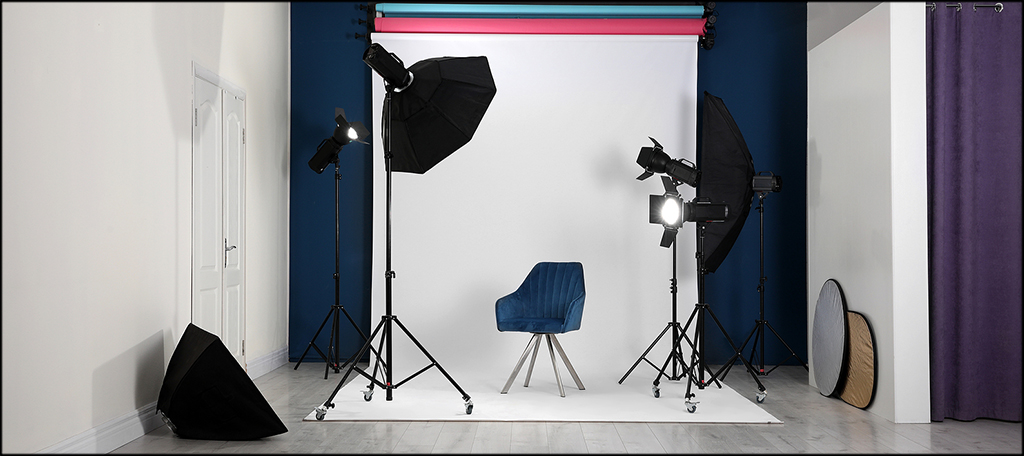Finding work as a freelancer can always be a challenge, even with years of experience. However, it doesn’t have to be. By creating a video portfolio on platforms like YouTube and Facebook, you can easily market your skills to potential employers.
While some freelancer jobs may not require a video, others like entertainment, web design, graphic design, and just about anything related to art and creativity do. In fact, it’s almost mandatory at this point to have a video that shows off your talents.
If you are unsure if you need one, simply take a look at other workers in your field, if you see any of them with one, it’s time to get filming.
What Is A Video Portfolio?
A video portfolio shows off your expertise in your field of business by showing off your skillset and previous work to attract new clients in a video format.
This is particularly important in industries that utilize video and graphics, like graphic designers.
With the rise of social media platforms, sharing video content with friends, family, and colleagues has become an integral part of our society. It is even more important if you are targeting millennials since they watch the most video content.
Are Written Resumes and Regular Portfolios Dead?
Absolutely not!
Written resumes are still used by every company to help sort potential workers and find the best fit. In fact, larger companies might spend a small fortune on powerful HR software to find the best talent available, especially when receiving hundreds of applications.
Thus, you must build a resume tailored for that specific job.
But what about regular online portfolios?
Online portfolios are still incredibly important. Not only do these provide examples of your work and show off your creativity, but they can also draw in customers through website ranking. This is especially powerful when combining it with a blog to boost search engine rankings.
And video portfolios can take this a step further by increasing the sharability of your profile and target the millennial age group.
The Types of Video Portfolios

1. Still Image Galleries
One of the most basic, but effective types of video portfolio is still image galleries. As the name implies, these are a collection of still images that are cycled through with some ambient music in the background or a short description.
These work well for artists and graphic designers who want to show off their work.
2. Demo Video
Showing off your skills live is an excellent choice. For example, a graphic designer could capture themselves creating something from scratch in Photoshop and then speed up the playback with some music in the background.
Not only is it interesting to watch a picture built from scratch, but it also shows off your skill at doing so.
3. Page-turner
A Page-turner is when a camera provides a top-down shot of a book and you turn pages to tell a story. This works very well if you have a collection of art sketches or pages of graphics or logo designs.
It’s an interesting style of video and does a terrific job of showing off your work.
4. Create A Commercial
This might sound a bit weird, but a commercial style video can show off a lot of creativity, as long as you were the one who made it. This is ideal when you are trying to show off video editing and filming skills.
And if it’s entertaining, it’s more likely to be shared with friends on social media.
5. Stop Motion
Stop motion is a well-known technique where you manipulate objects like figurines, models, or drawings in small increments to make them seem like they are moving. It’s perfect for those trying to show off their art skills.
And once again, these can be quite entertaining, which can help rack up views.
How to Make A Video Portfolio

Step 1: Hosting Your Website
The first thing you must consider is where you will be hosting your video portfolio. The most common way to host a video is through a platform like YouTube, and that’s perfectly acceptable. In fact, it’s encouraged.
However, you are a professional, and a professional should have their own website.
Thus, you are going to need a web host.
A web host is a company that operates and maintains the server your website is stored on. And there are a variety of factors to consider like uptime, speed, security, affordability, customer support, impact on the environment, and much more.
Step 2: Pick A CMS
You are also going to need to select a platform to build your website on. Luckily, it’s gotten extremely easy to build a website today.
Regardless of what industry you are in or your skill level, WordPress is the best choice to build a website on.
But don’t just take my word for it, it powers nearly 40% of the internet.
One of the main reasons it is such a popular choice is because of its large library of plugins to choose from. These are like apps for your phone. They add features to your website and can be used for just about anything.
And the best part is that you won’t have to write a single line of code.
You can also style your website using the thousands of free themes available. Themes dictate how your website looks and some of the features it has. In your case, you want to locate the best video portfolio themes and find the best fit for your website.
Step 3: Research the Competition
You may think your an expert in your field, but that doesn’t mean you are an expert at marketing in your field. Check out what other freelance workers have put together as a video portfolio.
After all, there are a lot of types to choose from.
For example, if you are a graphic designer, you might show off your editing skills inside of Photoshop and display a gallery with music at the end of the video. Perhaps you are a hairstylist, if so, there’s no better way to show off your skills than by showing before and after shots of clients.
There are a variety of types of video portfolios to consider, but some are better suited for some industries more than others. Thus, you need to research what works in yours.
Step 4: Purchase Video Editing Software and Equipment
This should come as no surprise, but you are going to need video editing software to make a video portfolio. Luckily, there is a lot of choices you may want to consider.
While you may not want to break the bank with top-line software, you need something that will look professional.
You may also need to get some equipment. This typically includes a camcorder, although if you have a really good 4k camera on your phone, you might be get away with it. However, you are definitely going to need a microphone.
The sound of your video can really make or break the presentation value of a portfolio. You don’t want your voice to sound muffled, or picking up the background noise. You need to sound smart and confident if you are speaking in the video.
Step 5: Create A Video Portfolio
With a website ready to go, filming equipment in hand, and video editing software, you are ready to create your profile. While the actual filming process is entirely up to you and different for everyone, there are some general tips you should follow.
If you are filming video, make sure that the background noise is not coming through. While in some situations, this is fine because it is unavoidable, like talking on a street. If your showing off your skills, you want them to be the focus, not the screaming in the background.
Avoid using too many special effects in the editing process. While having some is fine, overusing them can lower the value of your video. It can look like an amateur made it if there are too many.
Make sure the video shows off your skills. While this might seem obvious, this can easily be lost. The video must focus on you and your work. Don’t make a long list of credentials, show your skills.
And most importantly, make sure you have family, friends, and peers review your portfolio. The last thing you want to do is release a video portfolio and have clients spot obvious mistakes or witness bad editing.
This portfolio represents your business, and it needs to be flawless.
Should I Host the Video or Embed It?

Once you have the video made, you now have another choice to make. Should I upload my video on YouTube and embed it or host the video myself?
If you are planning on using the WordPress platform, I strongly recommend uploading it on YouTube and embedding it. This will result in it being on the YouTube platform, which can significantly help in Google searches and it will ensure faster load times on pages.
Keep in mind that if you do this, make sure you have a YouTube channel ready to go. Simply adding this video to an existing channel full of other videos from the past is not going to look good. Create a channel with your name or business name, add a YouTube banner, and consider other content you can include.
Videos hosted directly on your webpages can significantly lower the loading speed, which can easily scare away customers. After all, if your website runs slow, what does that say about you?
Besides, hosting the video on YouTube also gives you access to a variety of viewers and potential fans. It can open a myriad of doors you may not even realize.
Share Your Video
Once the video has been uploaded up to YouTube and embedded on your website, it’s time to think about marketing.
Share it on every available social media platform you can. Make sure it’s prevalent on your Facebook business page and LinkedIn profile. And make sure to put it on online work boards for your business.
For example, Fiverr.com is an excellent place to advertise if you are in the graphic design business. It has a variety of topics to help you find the right clients. Adding a video of what you can do can really help you out.
Consider Hiring An Expert
If video editing isn’t your forte and you feel that a video portfolio can really help you, you might want to consider an expert.
Just like there are plenty of businesses dedicated to helping you create a strong resume, there are plenty of graphic designers that excel in video editing. In fact, most professional YouTubers have editors on staff.
Keep in mind that this will significantly raise the price of building a portfolio, but it’s well worth it if you increase your clientele.

